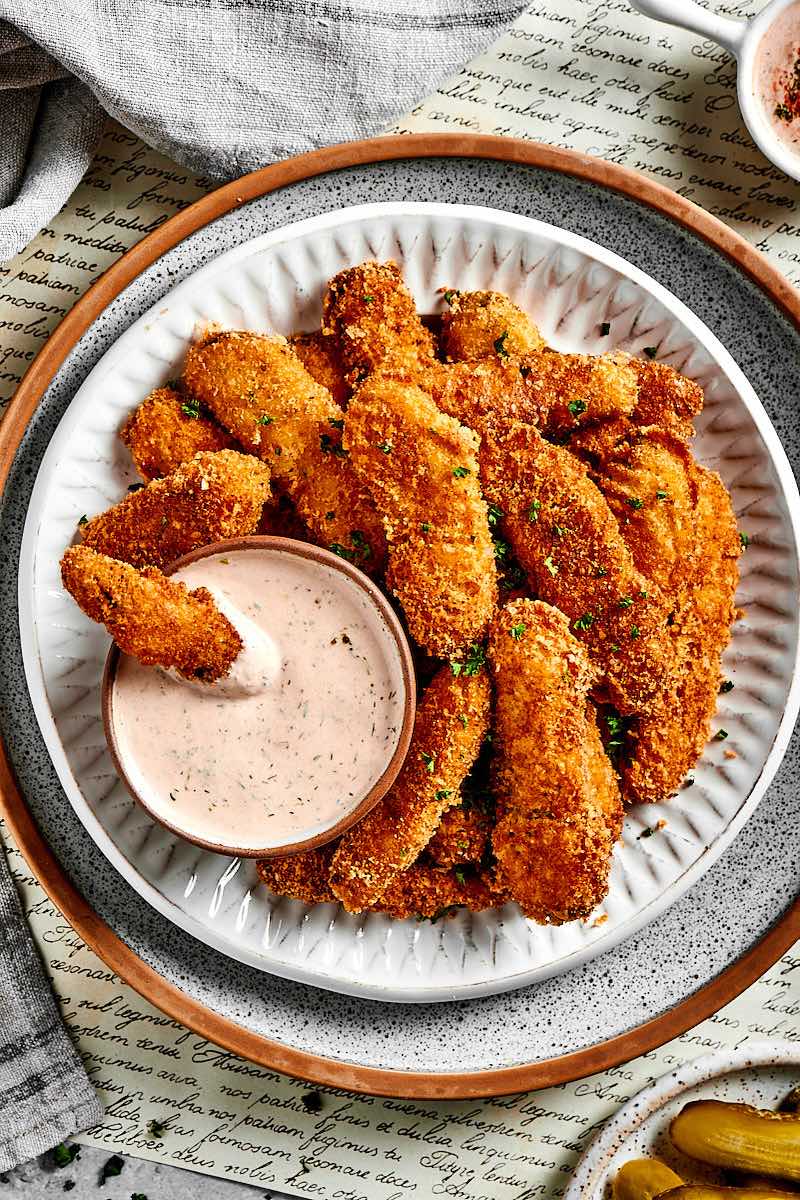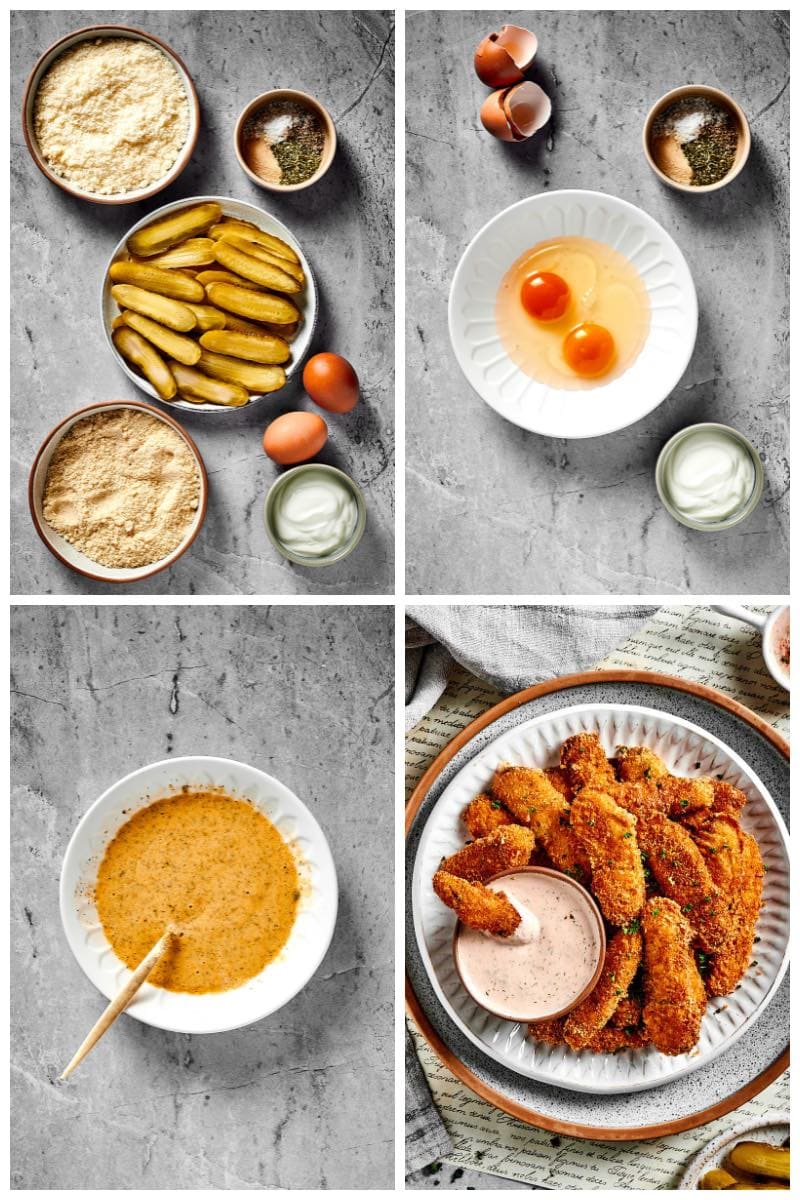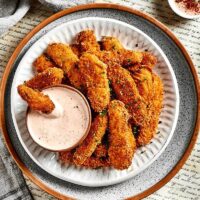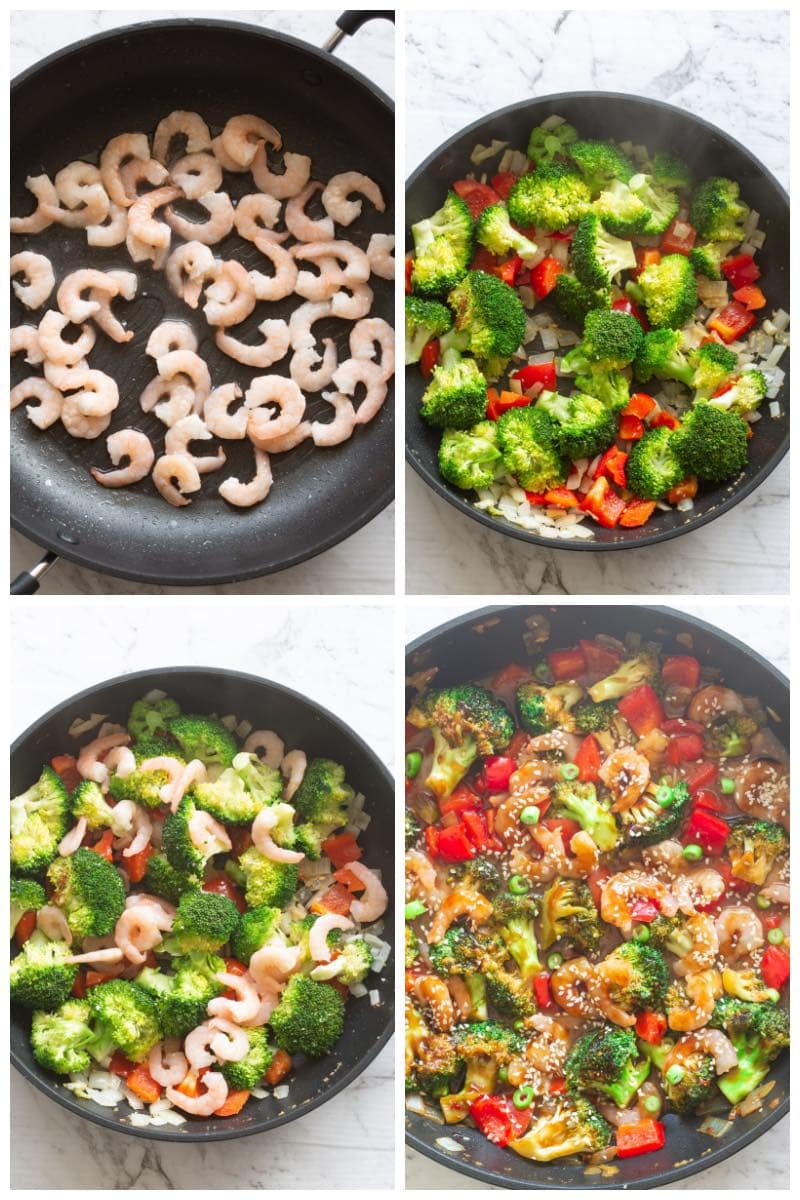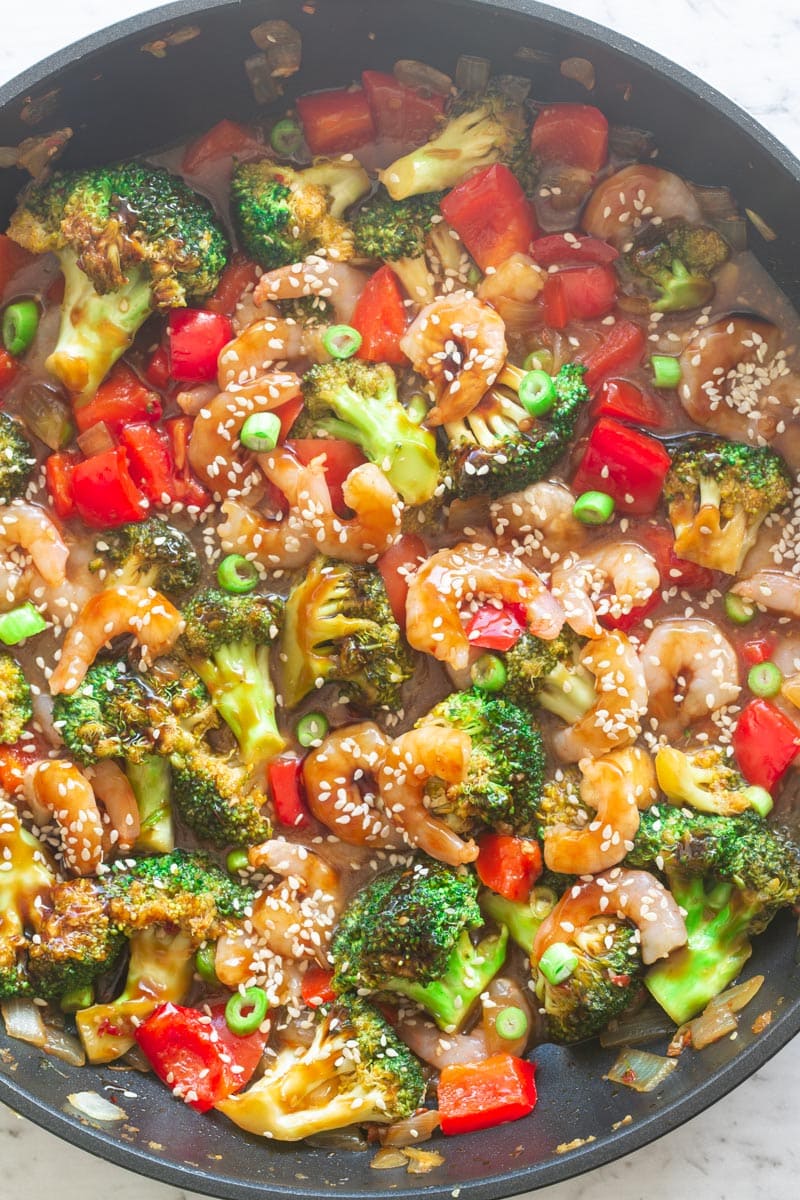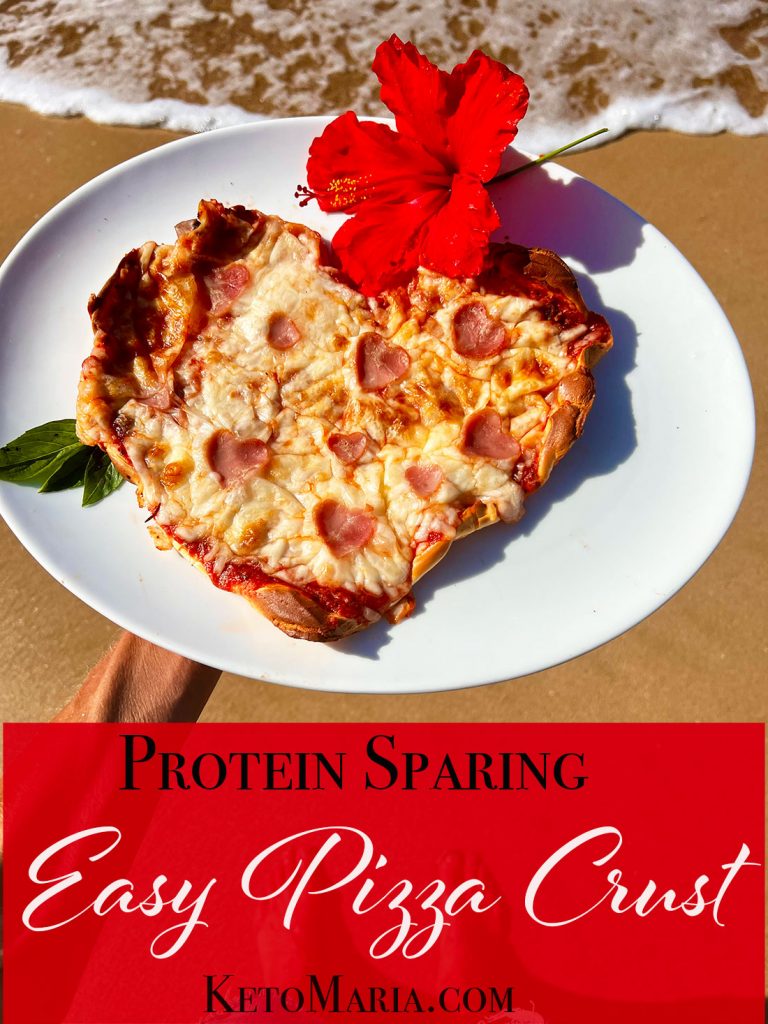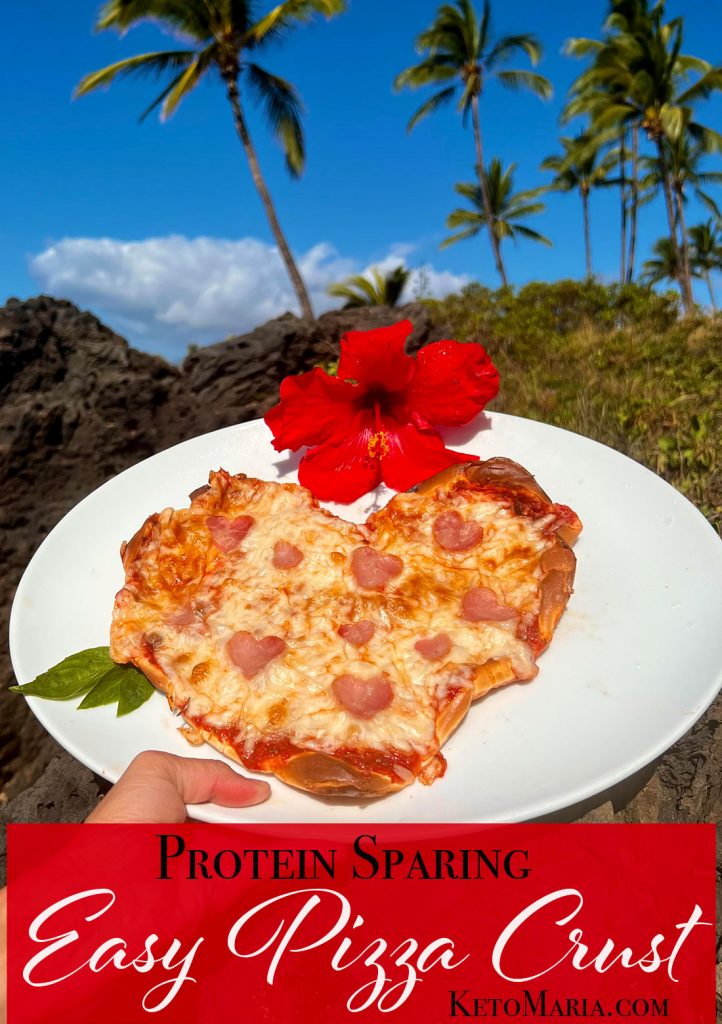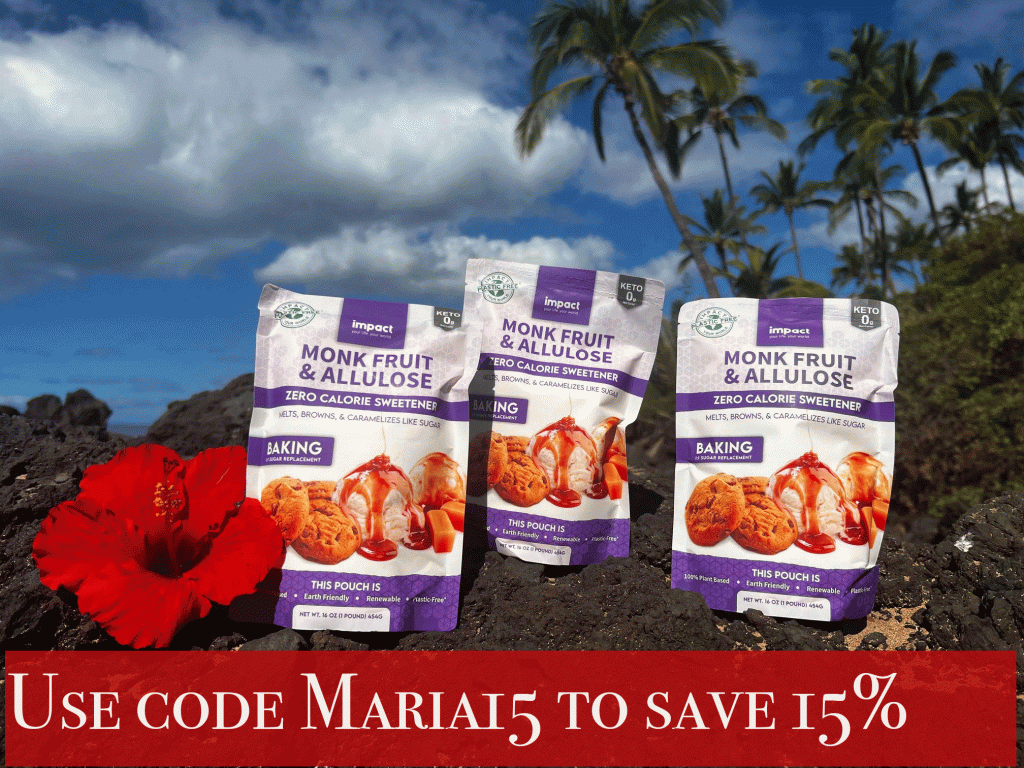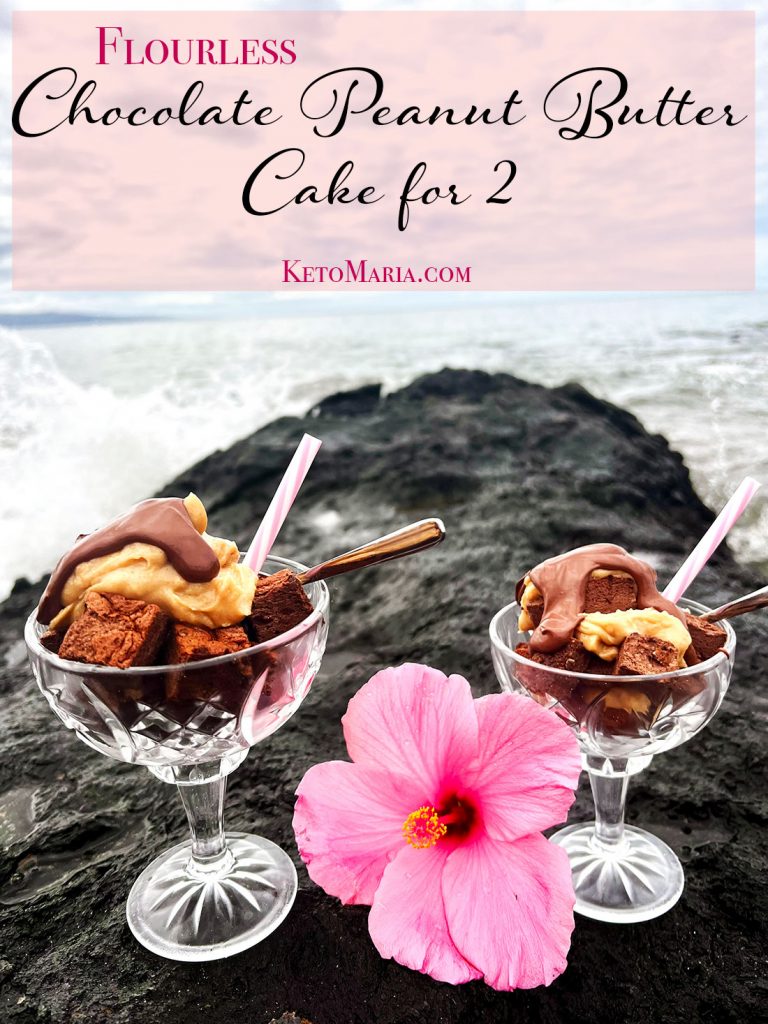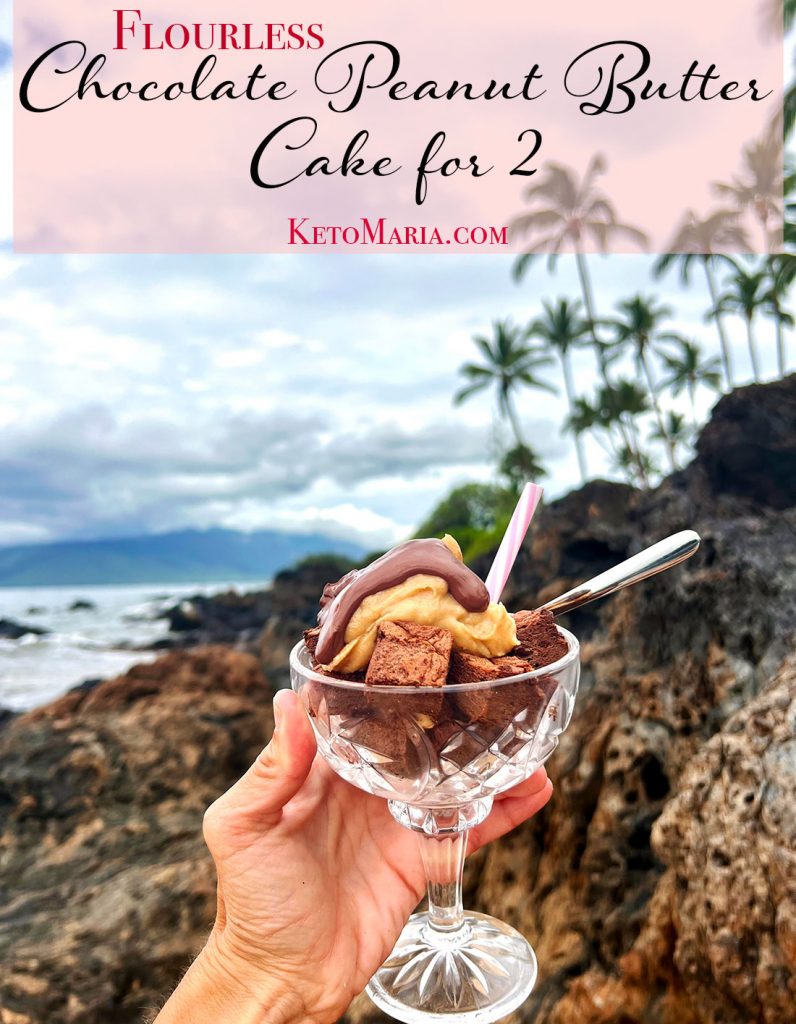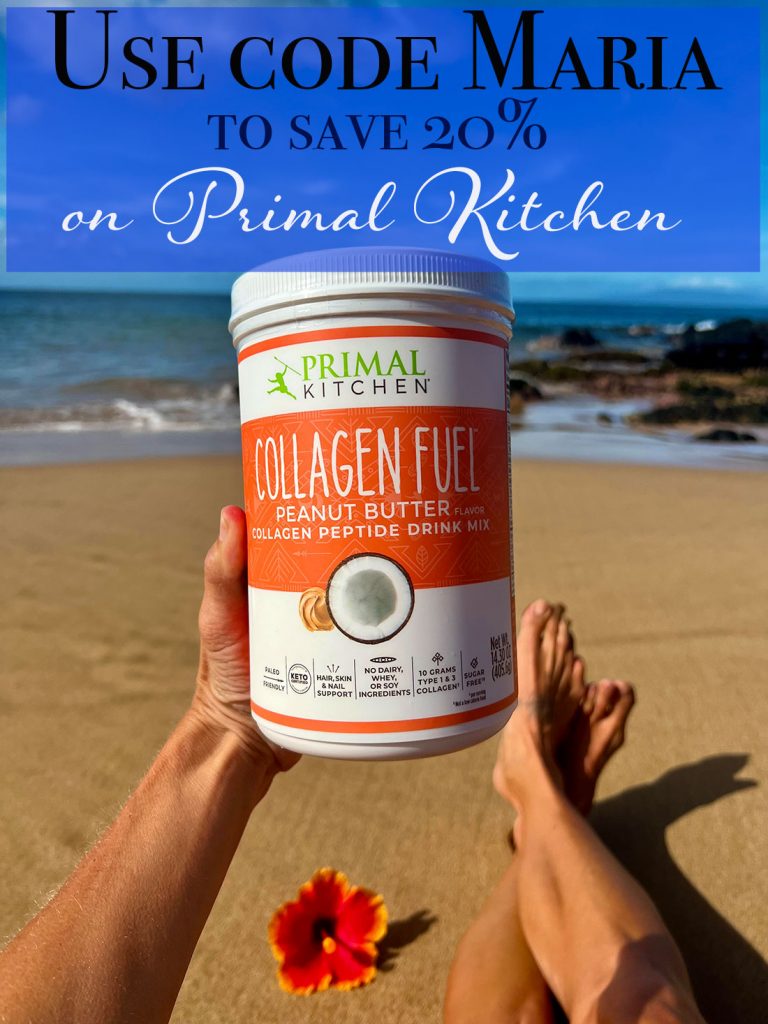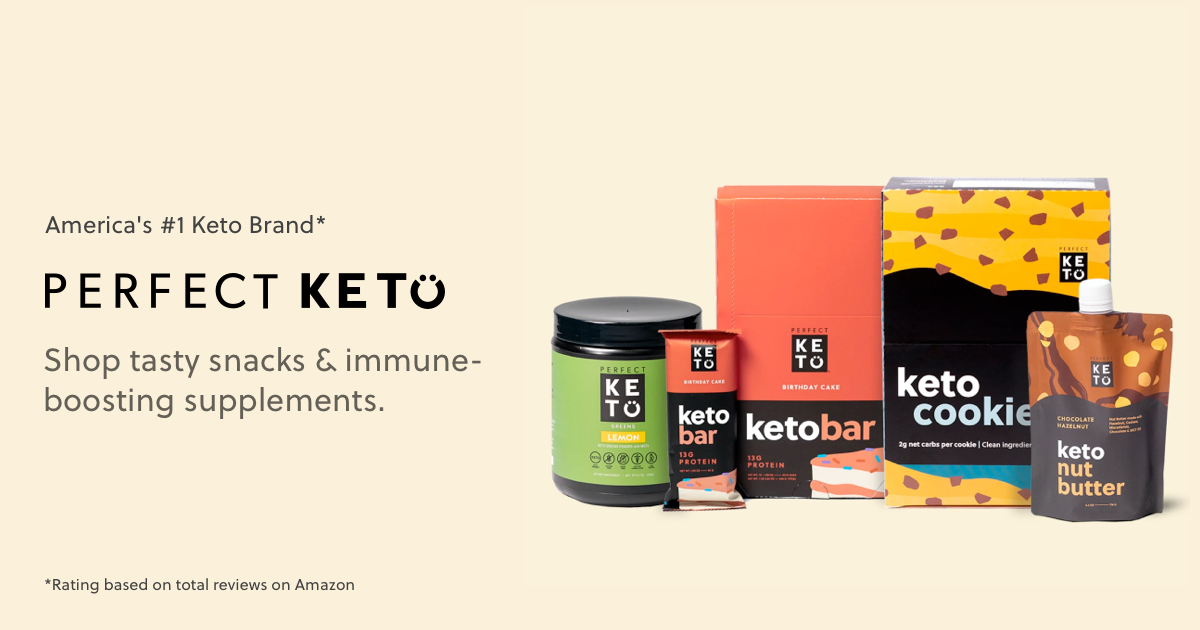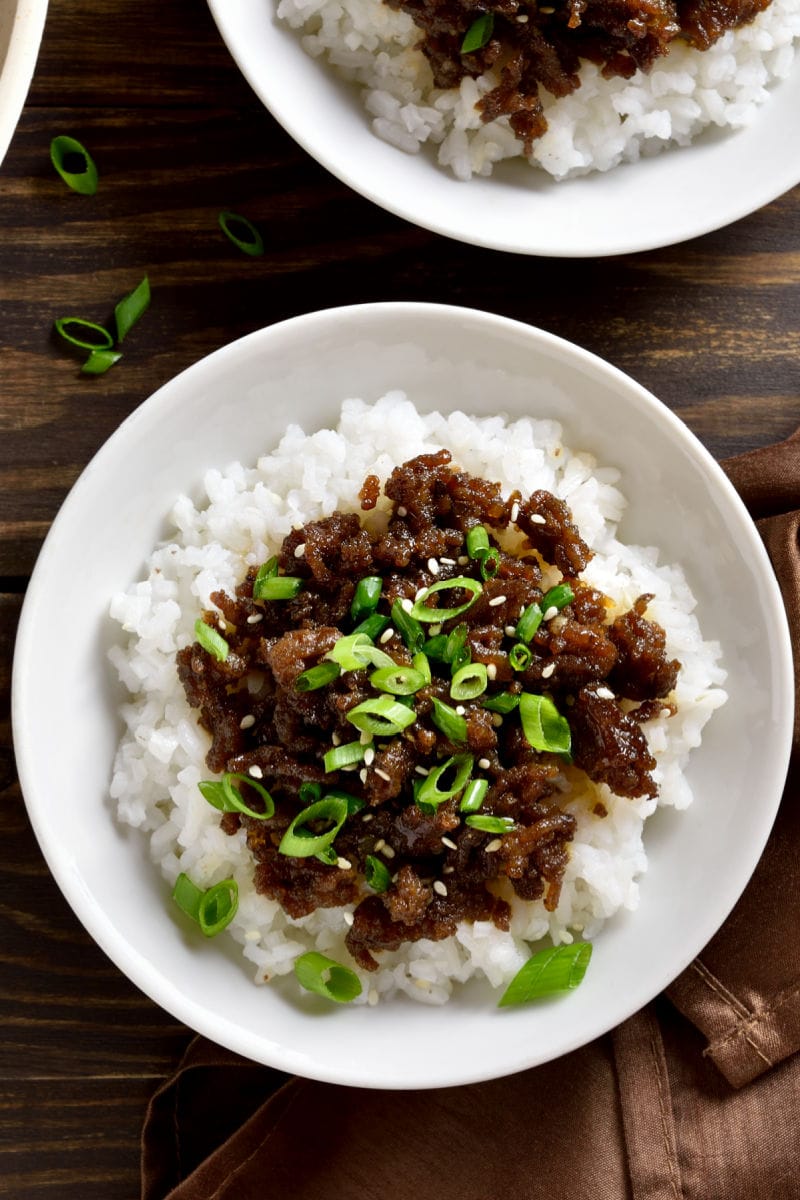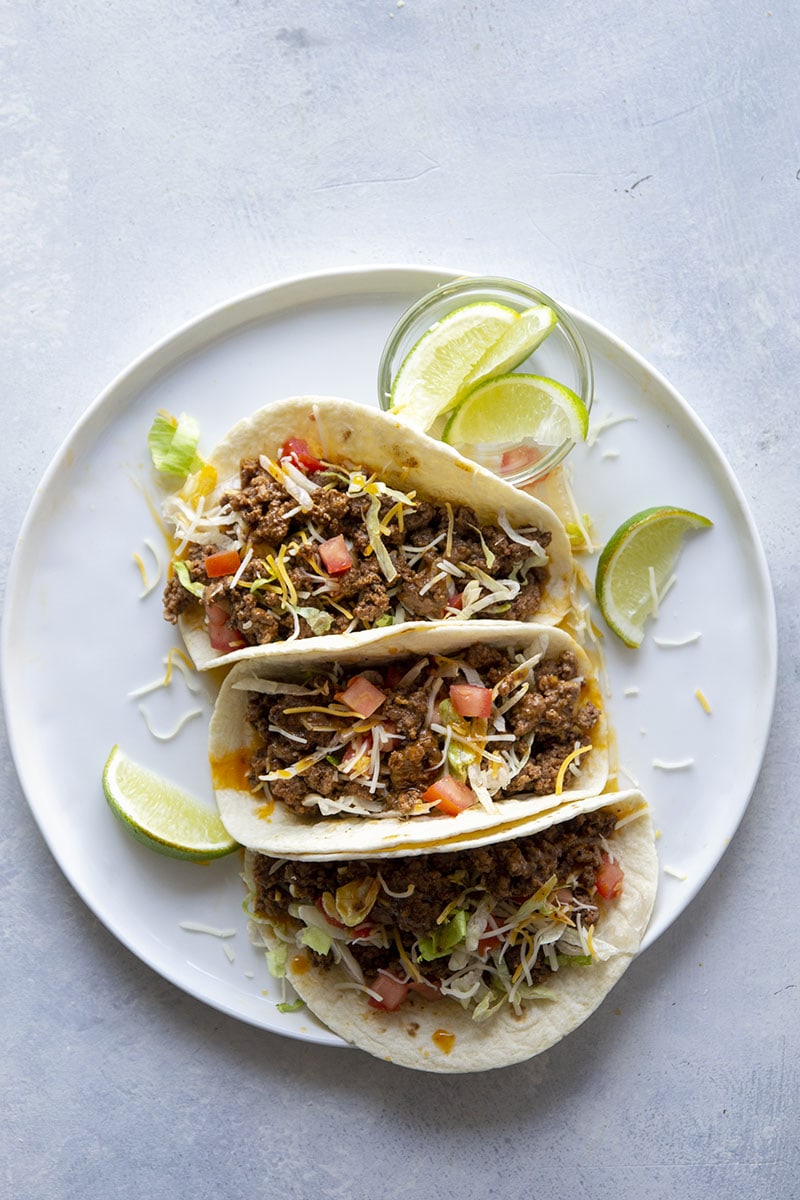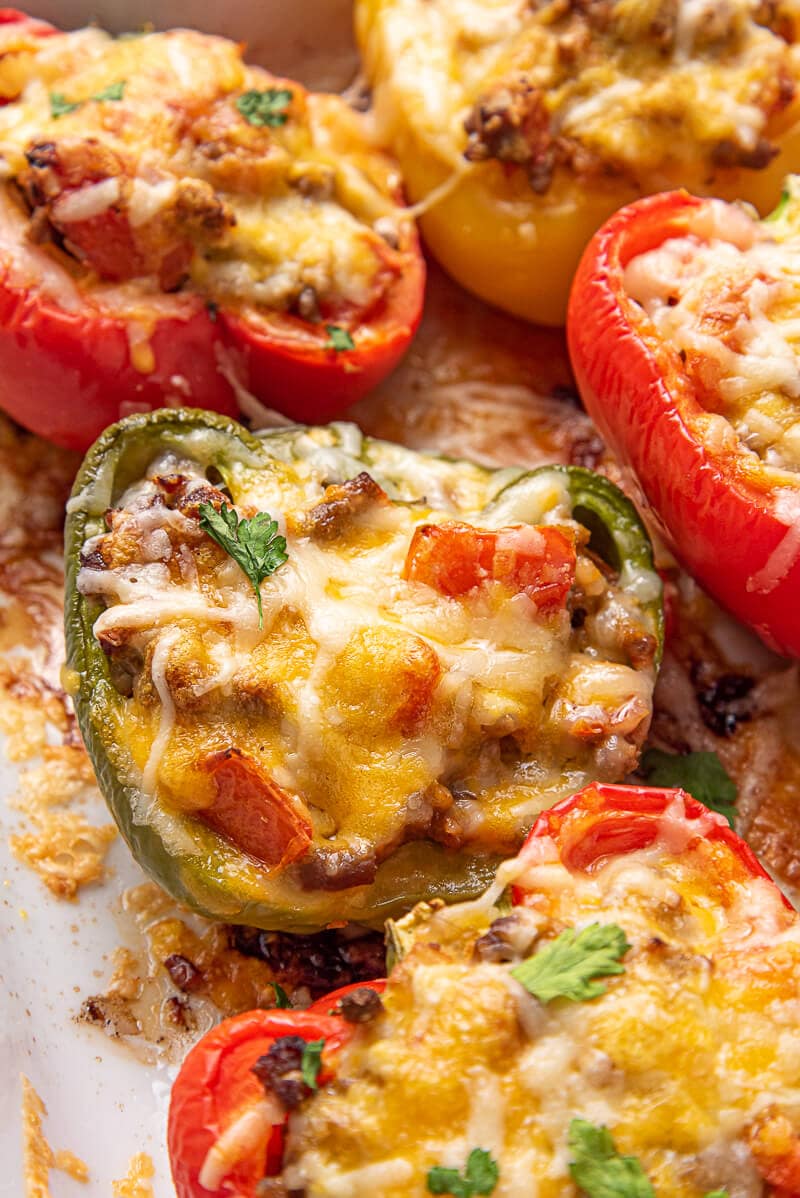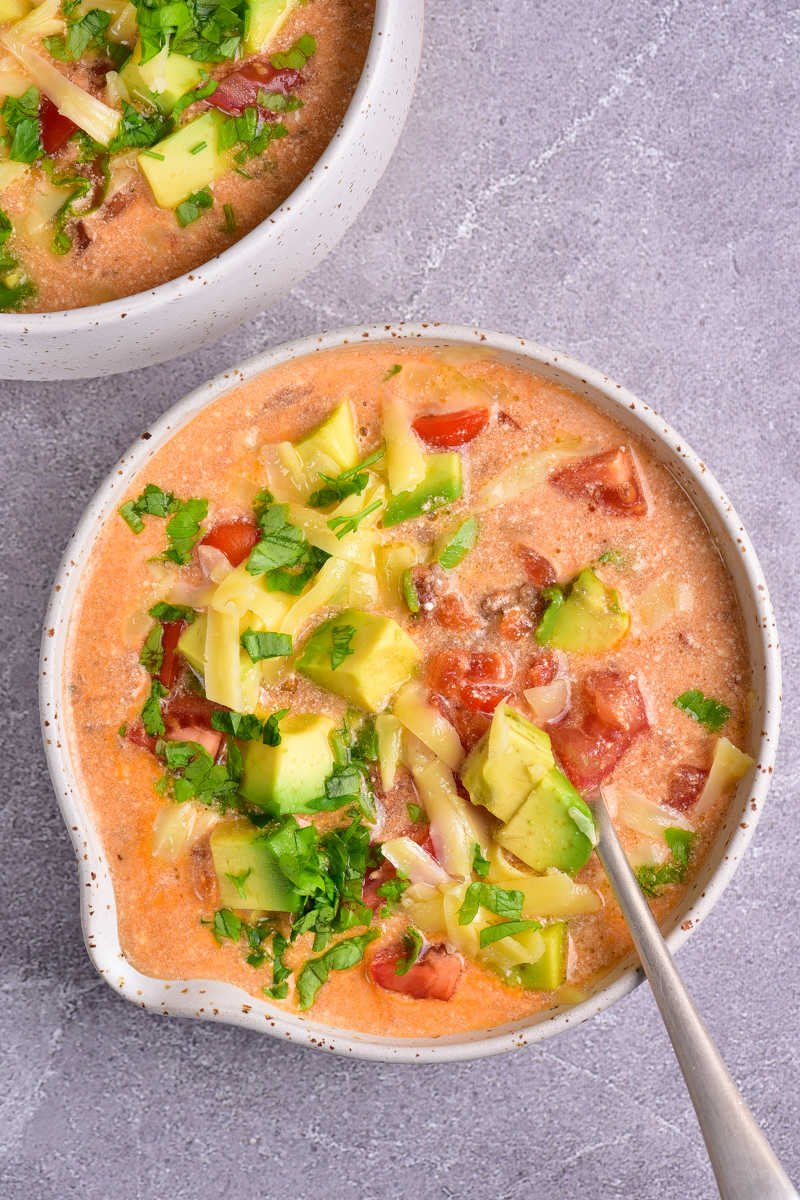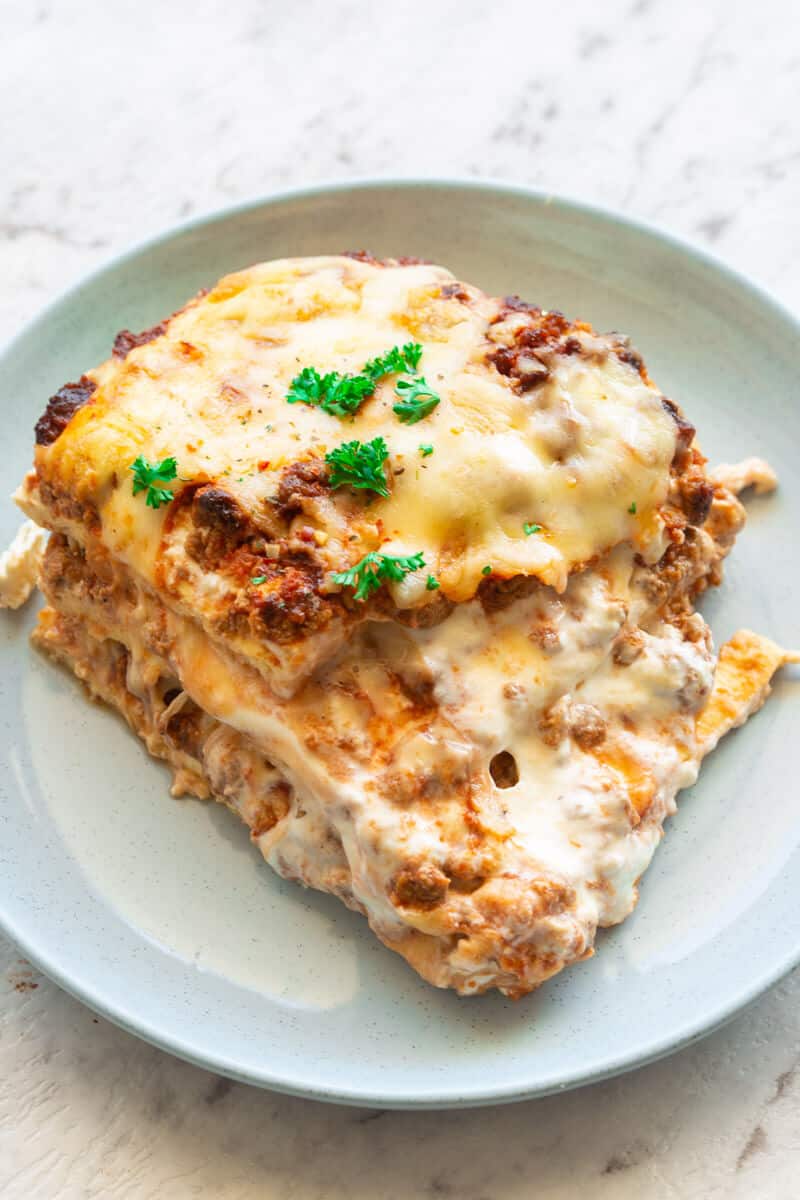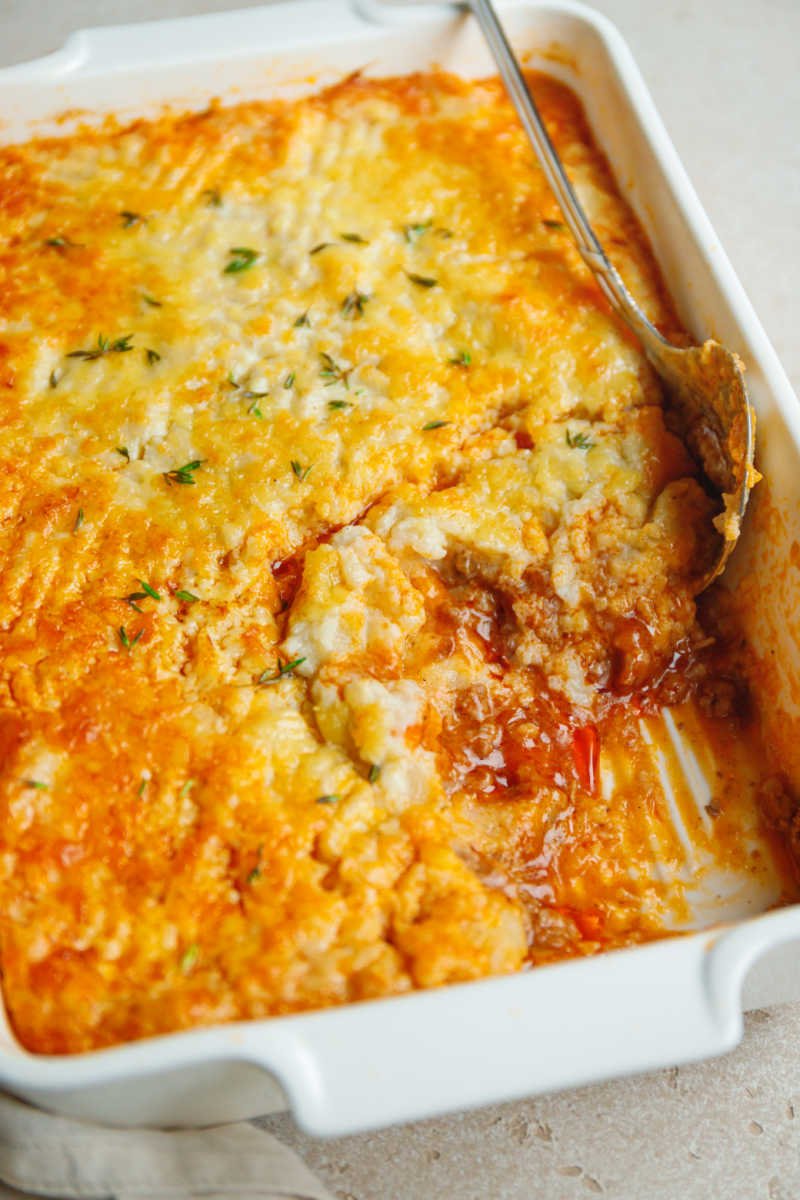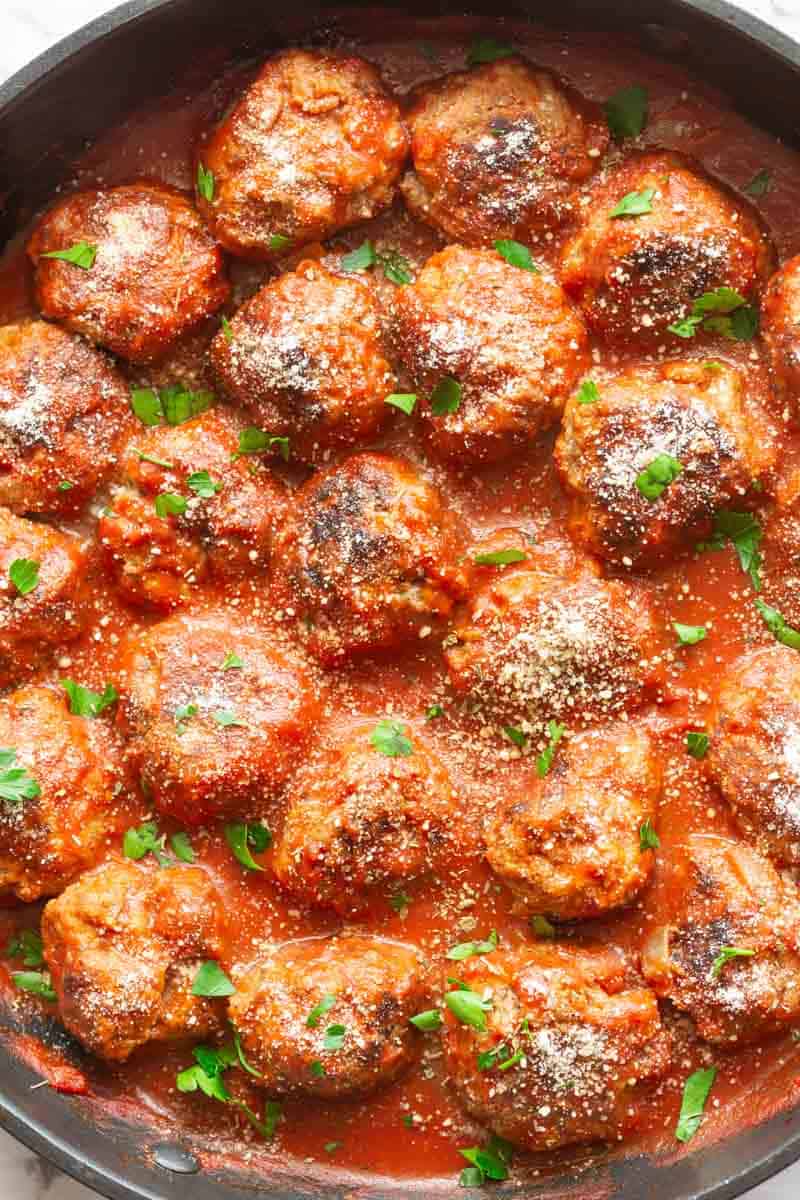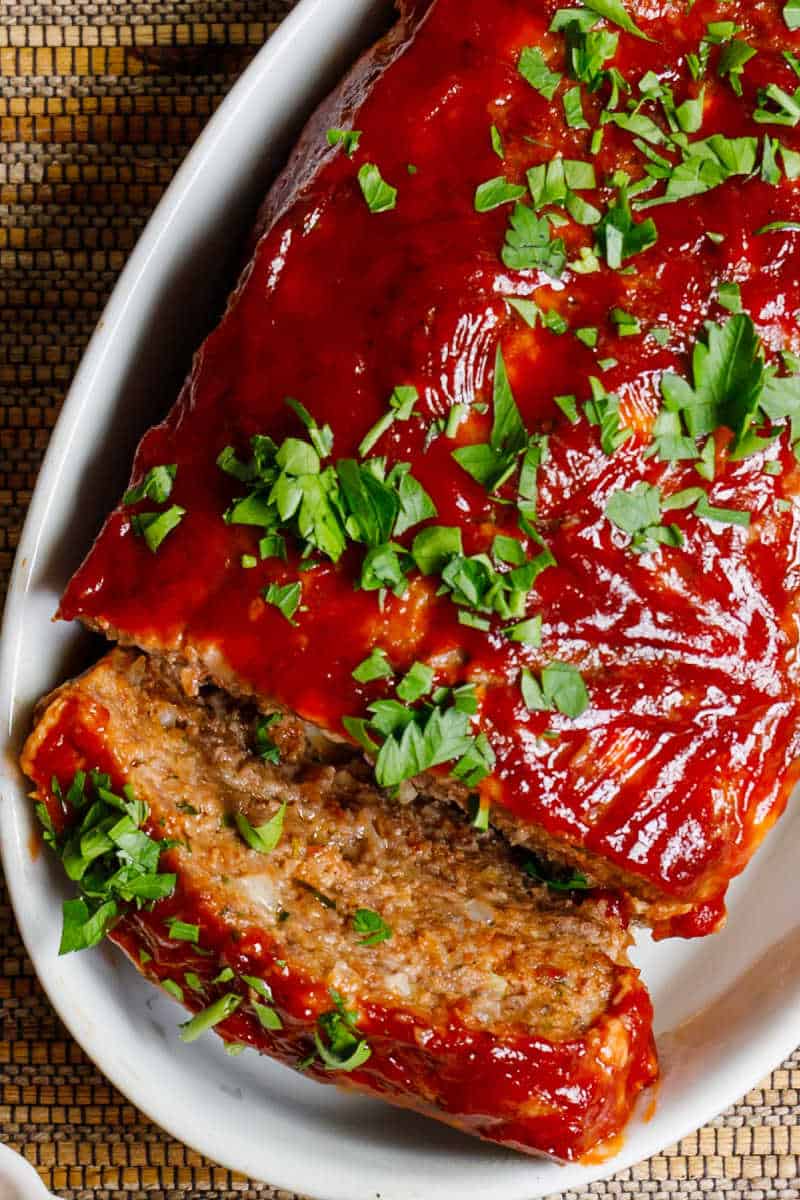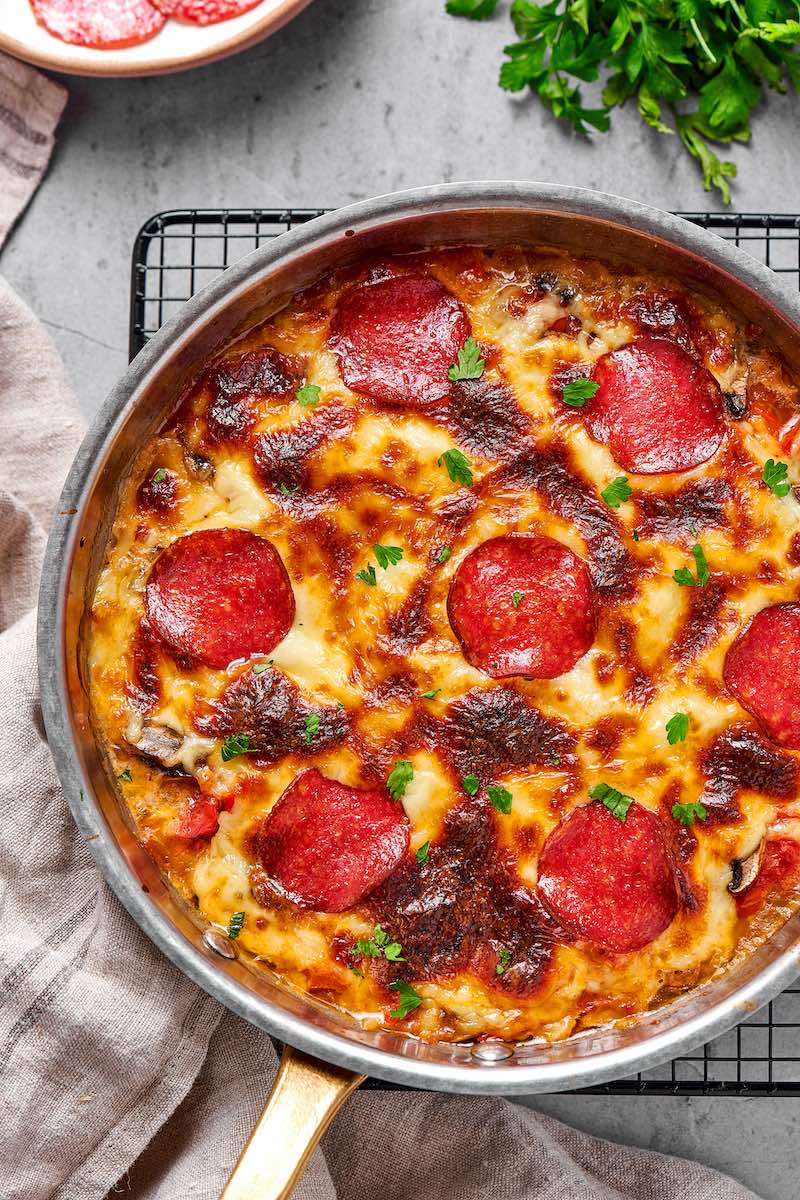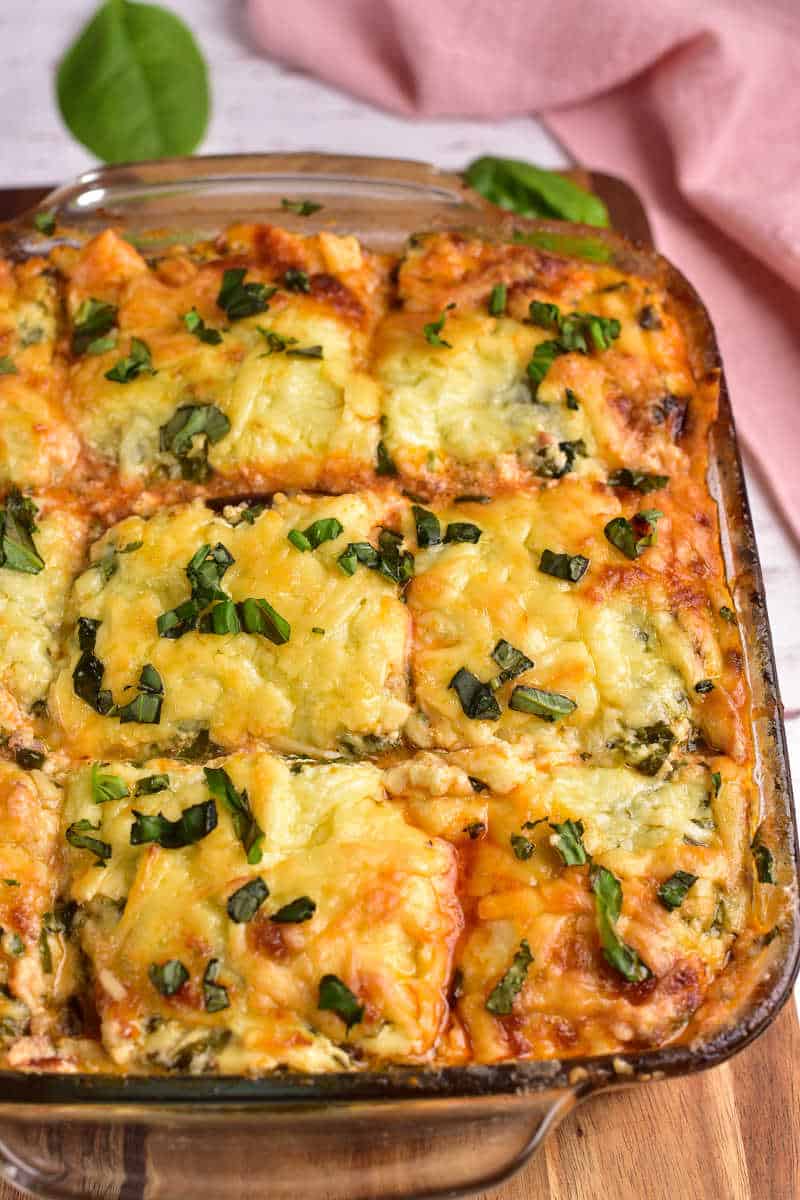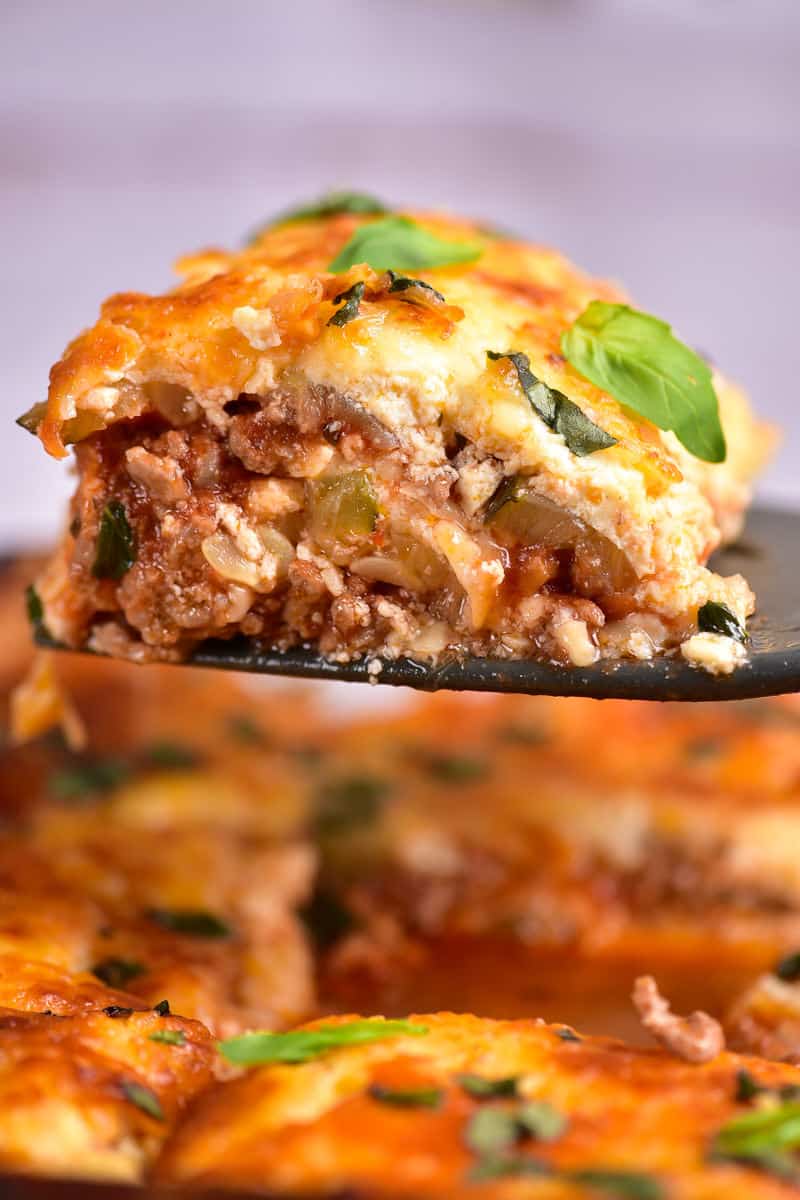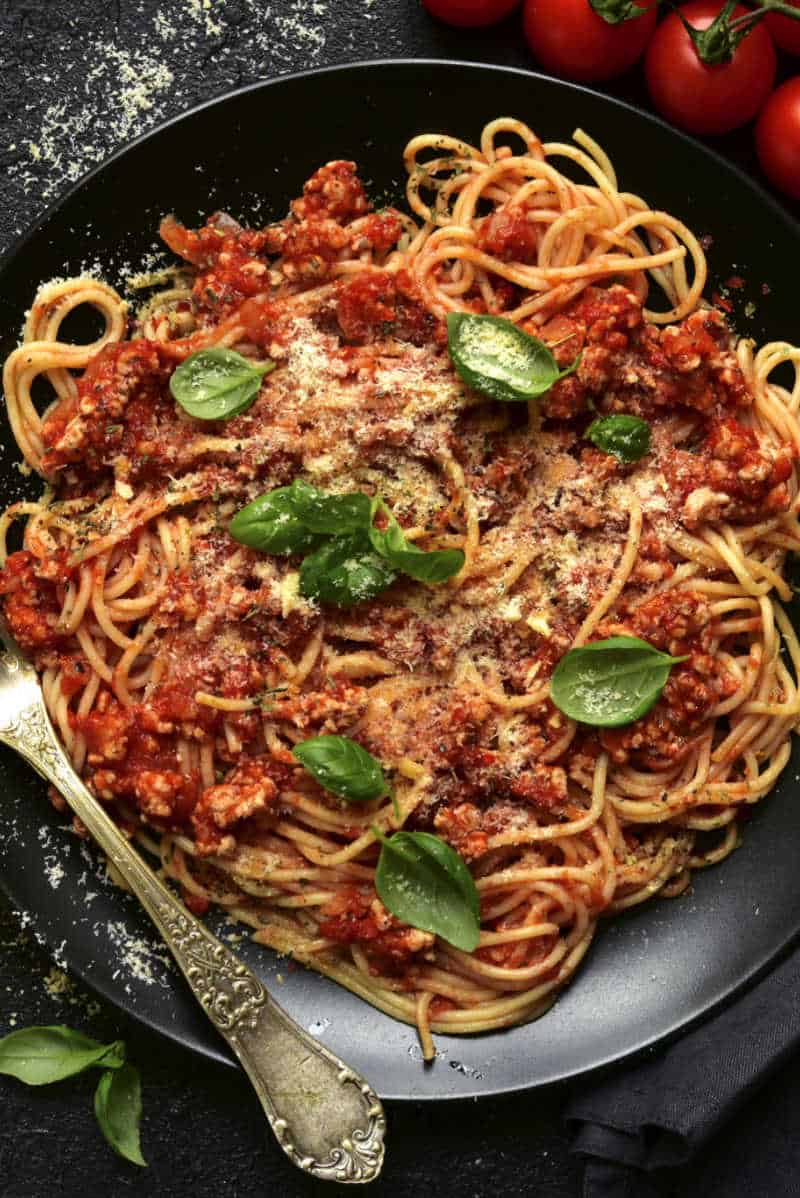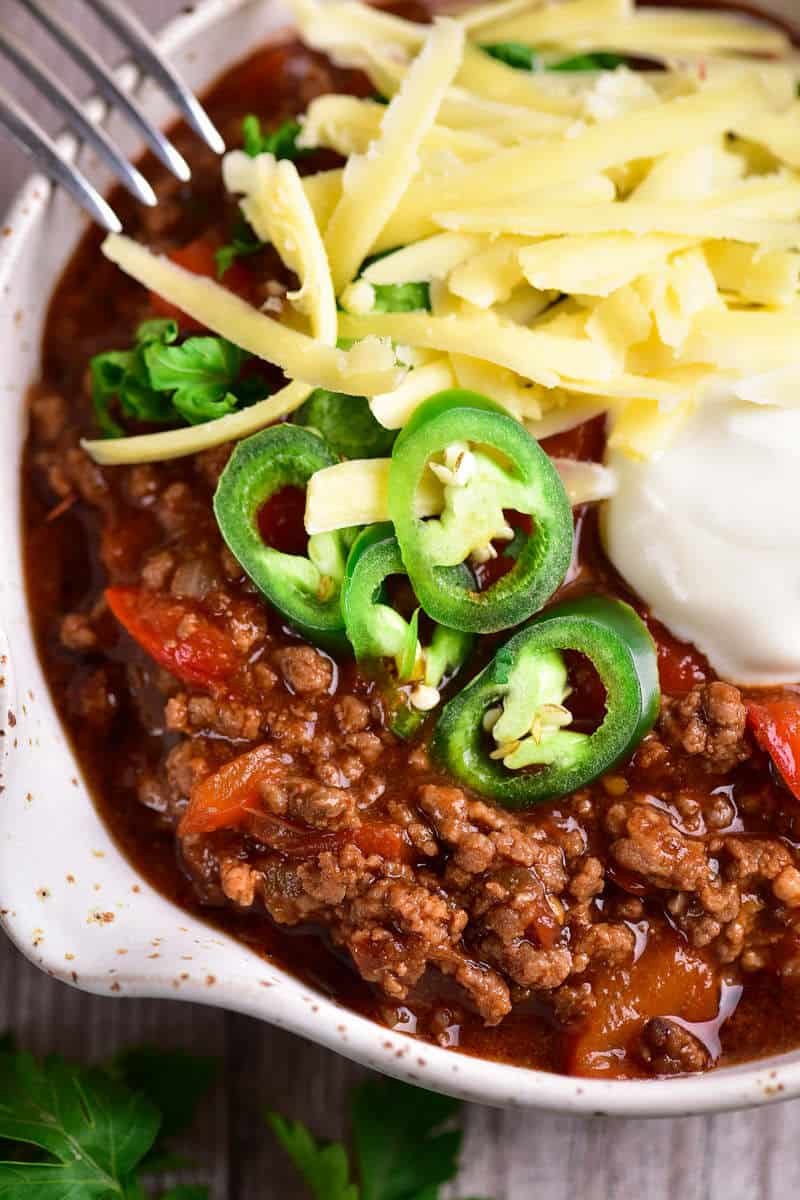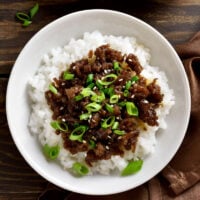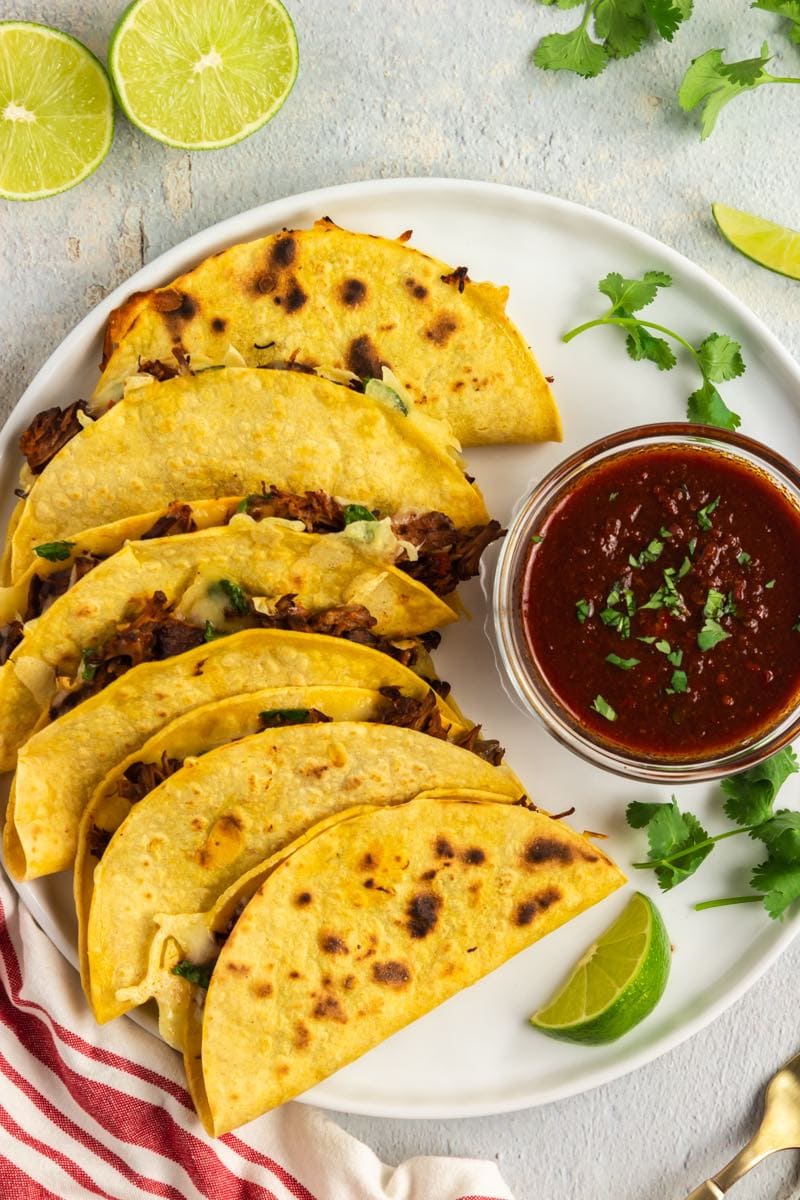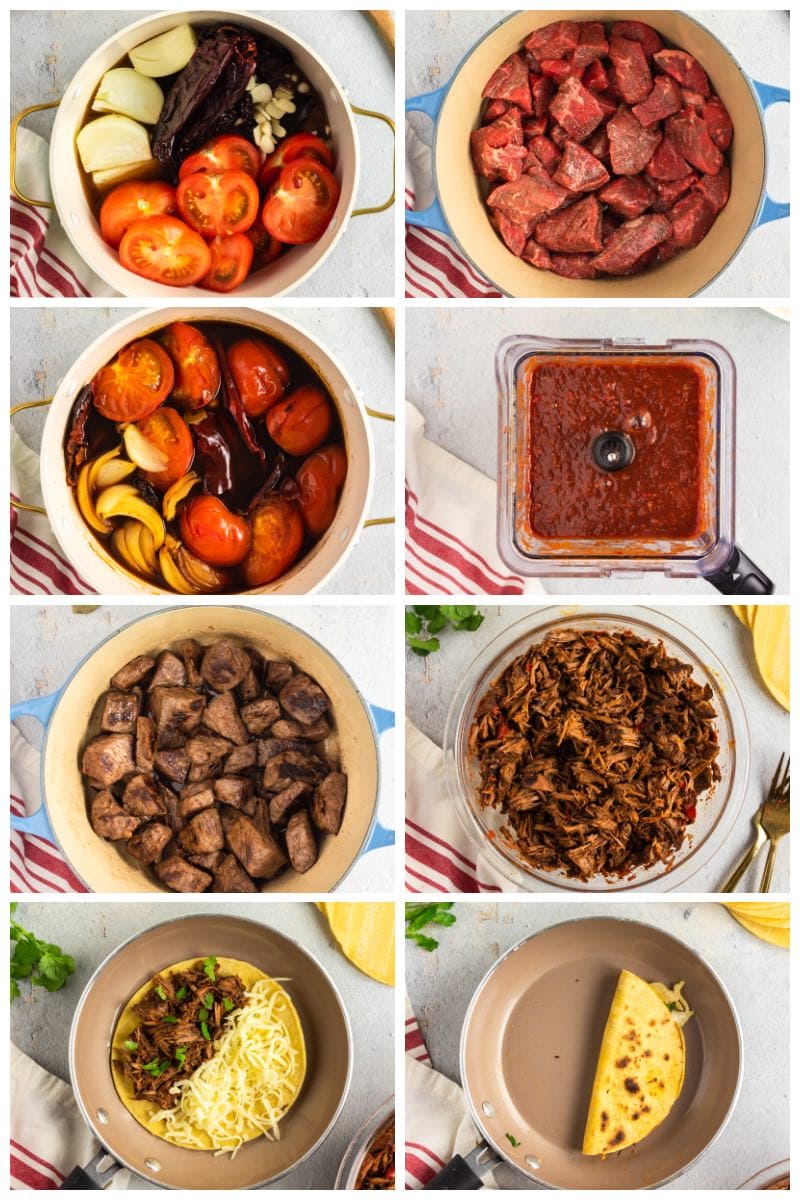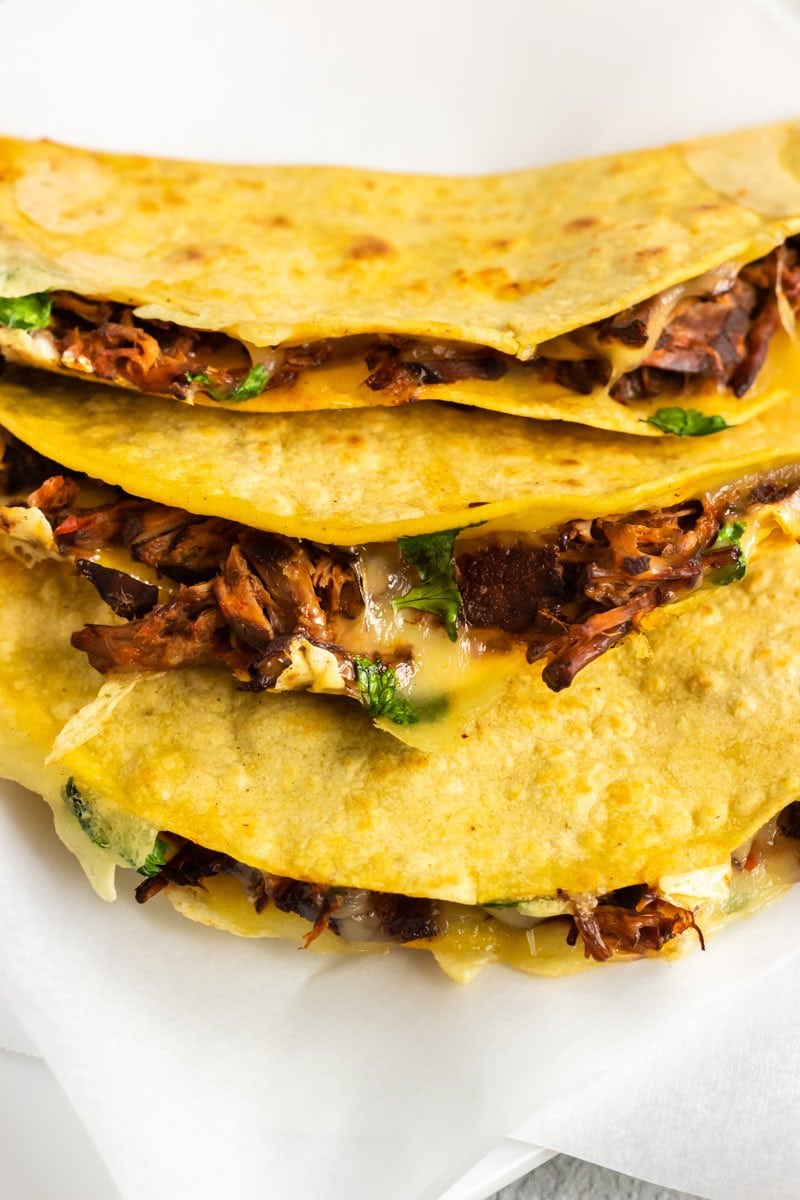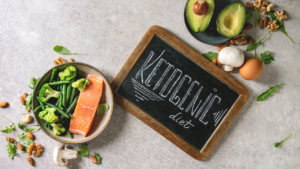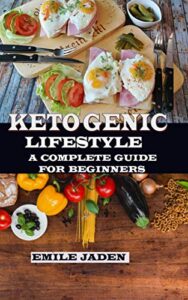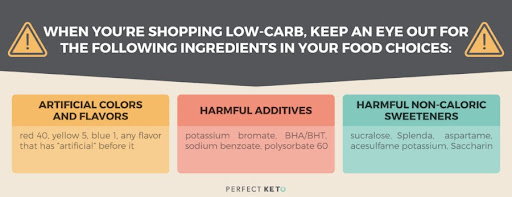
This Is How to Read a Nutrition Facts Label on the Keto Diet
Knowing how to read food labels correctly is an essential part of healthy eating. Understanding concepts like serving size versus portion size and percent daily values puts you in the driver’s seat regarding your food choices.
Despite food labels’ usefulness, though, many people don’t use them as a guideline for diet choices. One study found that about 62% of shoppers don’t choose foods based on nutrition information.[*]
Whether you’re trying to stay in ketosis, maintain your blood sugar level, or meet certain targets for carbs, fats, or protein, interpreting the breakdown of macronutrients and ingredients in your foods is key. You’ll want to keep a close eye on nutrition labels to make sure the foods you’re including are working for, not against, your dietary goals.
To help you make the most of pre-packaged foods, we’re taking an in-depth look at the different elements of food labels and how you can use them to enhance your choices, both on a keto diet and for general health.
Why Label Reading Matters on Keto
Unlike some diets that dictate exactly what you have to eat and when, a keto diet offers considerable flexibility with your food choices. But a keto diet does require strict attention to one aspect of eating: your macronutrient distribution, and net carbs in particular.
As you’re likely aware, the goal of a keto diet is to shift the body into a metabolic state called ketosis. To do this, you’ll need to consume the right ratio of carbs, fats, and proteins. And how do you know how many of these macros a food contains? By reading labels!
Deciphering the information on food labels gives you an accurate way to monitor your macros and stay on track.
Additionally, getting label-savvy helps you spot specific ingredients that aren’t keto-friendly so you can make smarter, more informed choices.
A Short History of Food Labels
It wasn’t until the 1960s that the idea of nutritional labeling grew in popularity[*]. At that time, some packaged food companies would list their sodium or calorie content, but those foods were considered “for special dietary uses” by the FDA. As people grew more health-conscious and the link between diet and health became clearer, consumers started to demand more nutrition information on their packaged foods.
Eventually, the FDA began to call for nutrition information on food packaging. Seeing a marketing opportunity, manufacturers responded by adding unregulated health claims on packaging, such as “extremely low in saturated fat.” This unregulated health claim marketing continued for a short time, but the FDA quickly stepped in to initiate guidelines for companies to follow. The first call to action was that if a manufacturer wanted to make a health claim, they also had to include a nutrition facts label to back up the claim.
Even with these requirements, the 1960s and ‘70s were like the wild west of food labeling. Without legislation, undefined claims like “extremely low in saturated fat” could go unchecked. [*]
So the FDA finally came up with the Nutrition Labeling and Education Act (NLEA) in 1993. This act mandated that, with a few exceptions, all packaged foods needed nutrition labels — thus creating the black-and-white labels we see on packaged foods today.
The nutrients that required labeling included:
- Calories
- Calories from fat
- Total fat
- Saturated fat
- Cholesterol
- Sodium
- Total Carbohydrate
- Dietary fiber
- Sugars
- Protein
- Vitamin A
- Vitamin C
- Calcium
- Iron
Since the 1990s, some changes have been made, including which nutrients manufacturers must clearly list on labels.[*] Nutrients like vitamin A and vitamin C are no longer required, while vitamin D, potassium, “added sugars,” and trans fats must appear on labels[*].
Take the keto quiz
Find the right keto snacks & supplements
for your unique goals
Take quiz
Now that you’re familiar with the history of food labels and why they’re important, let’s move on to practical tips you can use to understand what’s on those labels.
Reading Food Labels: How to Understand the Terminology
To truly understand what you’re eating, you’ll want to get familiar with these parts of food labels:
Serving Size
Serving size is meant to be a measure of the amount that reflects what people really eat, not the amount they should be eating[*].
Each nutrient listed on the label refers to the amount of that label contained in one serving, which is usually not the entire package. For instance, if “Total Carbohydrates” are listed as 10 grams (10 g), that’s accurate for one serving. If the amount contained in the package is 4 servings, however, the entire package actually contains 40 grams of total carbs.
Bottom line: make sure you understand the serving size as shown on the label, as well as the amount you’re personally likely to consume at a sitting, because if you don’t you’ll be unable to make accurate decisions about which foods to buy.
Calories
Calories are measurements of energy contained in food. One calorie (or Kcal) is the amount of energy it takes to heat one kilogram of water by one degree Celsius. Food scientists use this measurement to determine how much energy different foods provide.
Practically speaking, the number of calories you eat each day — also called energy balance — is one of the biggest factors in whether you lose or gain weight[*]. All things being equal, eating more calories than you burn tends to lead to weight gain (usually body fat but also potentially lean muscle), and eating fewer calories than you burn will lead to some amount of weight loss[*].
The keto diet places less emphasis on calorie counting than most other diets, but it’s still helpful to pay attention to calories on labels.
When you look at the calories in your packaged foods, they don’t represent nutrient density or weight; it’s simply the amount of energy that the food holds.
To go a little deeper, each of the three macronutrients (protein, carbohydrates, and fat) contains a certain amount of calories per gram, no matter what food they’re in.
For instance[*]:
- 1 gram of protein = 4 calories (4 units of energy)
- 1 gram of carbohydrate = 4 calories (4 units of energy)
- 1 gram of fat = 9 calories (9 units of energy)
You don’t have to memorize these values, but simply keep in mind that calories are the sum total energy of the protein, carbs, and fats found in food, and they strongly influence whether you lose, maintain, or gain weight.
Percent Daily Value (% Daily Value)
Percent Daily Values, or %DV, show the average percentage of a specific nutrient you need for the entire day, assuming you consume about 2,000 calories per day. The 2,000 calorie figure is based on average adult caloric needs[*].
In other words, if a serving of food contains a DV of 10% vitamin C, that’s 10% of the vitamin C most adults need for the day, according to the FDA — your goal should be to get 100% or more[*]. The reason for using percentages is because they’re much easier to read at a glance compared to amounts like milligrams. Some labels show both, but it’s simpler to assess using the percentage figure.
You may also hear about RDI (Reference Daily Intake) and DRV (Daily Reference Values), which essentially mean the same thing as Percent Daily Value[*].
Ingredients List
The ingredient list is usually found below or next to the nutrient breakdown. This is an important (and often overlooked) part of the food label:
- The ingredients list provides important information not contained in the basic nutrition facts, namely the source and quality of protein, carbs, and fats.
- You can only learn if unhealthy artificial ingredients (like artificial colors, artificial preservatives, and artificial sweeteners like sucralose) are present by reading the ingredients list.
- On the keto diet, the ingredients list is also a great way to decide whether a food is keto-friendly or not: it helps you avoid hidden sources of sugar like maltodextrin, for example.
The ingredients are listed in descending order by weight, from highest to lowest. If you’ve ever wondered about the phrase “contains 2% or less,” this means that each subsequent ingredient makes up 2% or less of the total of the food. If multiple ingredients are listed there, it can add up quickly.
Manufacturers must list all the ingredients their foods contain. However, many ingredients go by several different names. If you have a sensitivity to any particular food, it’s essential to know all the names that food can go by. For instance, hydrolyzed wheat protein is a form of gluten. And casein is a dairy protein that many people are sensitive to.
Even if you don’t have an allergy or sensitivity, reviewing the ingredients list is essential for you to be able to understand the quality of foods you’re considering purchasing. It’s also generally the case that foods with fewer ingredients, more ingredients from natural sources, and few to no ingredients like preservatives are higher quality, fresher, and better for your health.
The Basics of Reading Food Labels: How to Read a Label in 5 Steps (For Any Diet)
To make healthy food choices, stick to these five steps.
Step #1: Check the Serving Size
Always start by looking at its serving size. This will ensure that you’re calculating nutrition based on the amount of food you’re actually consuming.
It’s also important to keep in mind the number of servings per package. You may be surprised that the bag of snack food you typically buy has 5 servings, not one — which could lead to accidental overeating if you’re not careful.
Step #2: Check Out the Total Calories
Even though calorie counting isn’t the basis of weight loss on keto, knowing how many calories a food contains can help you determine if it fits into your menu as snack — or if it’s a meal.
If you’re someone who typically consumes around 1500 calories a day, then a 500 calorie food may be a whole meal. However, if you’re consuming 2500 calories a day, a 500-calorie food could be a hearty snack.
Another benefit of checking calorie content is that you can better make up your mind which foods are worth including at all. Foods that are more filling or have more micronutrients are a wise choice, but it’s usually a good idea to limit or avoid foods that have high calorie density (lots of calories per serving) and aren’t high in nutrients.
Step #3: Check Out the Macronutrient Ratio
Macronutrients can be a meaningful way to assess the quality of your diet and decide how certain foods can fit in.
Take a scan of a food’s total carbohydrates, total protein, and total fat. Depending on your goals, you may want higher or lower numbers for each of these:
- Higher protein (25% or more of your daily calories) can help you feel more full, boost your metabolism, increase fat-burning, speed recovery, and help build lean muscle[*][*].
- Athletes and highly active people can consume additional carbs before activity to support physical performance, especially during competition[*].
- Eating a lower carb diet with fewer carbs (100-150 grams per day or less) and more healthy fats to replace them, whether or not you’re full keto, is associated in research with weight loss and related health benefits[*].
The typical keto macro ratio includes 20-25% or more of calories from protein, 5% or fewer of calories from carbs, and the rest (75-80% or more) from healthy fats.
Step #4: Check Out the Daily Values
If there are certain nutrients you know you need to pay close attention to for your health, checking the daily values (DVs) is an especially important step. As we explained in-depth above, the Daily Value gives you an estimate of how specific nutrients contribute to your daily needs based on a 2,000 calorie per day diet.
A low daily value for any nutrient is 5% or less, while a high daily value is 20% or more — but keep in mind that the numbers you see on the label are for the average person eating a 2000 calorie a day diet and may not translate to your diet directly if your usual calorie intake is significantly higher or lower.
Even if you don’t keep count of your exact vitamin and mineral intakes, the daily values on labels can be a helpful guide to choose more nutritious foods consistently.
Step #5: Check the Ingredients List
Before you make a purchase decision, always check the ingredients list to help you find the highest quality food that fits your needs.
No matter how good something looks from the macronutrients and daily values portions of the label, it’s still possible that it’s over-processed or contains additional, undesirable or low-quality ingredients you’d rather avoid.
How to Read a Food Label on a Keto Diet
If you’re working to achieve or maintain ketosis, there are a few other aspects of the food label you’ll want to stay aware of. Here’s what to focus on for optimal keto results:
1. Carbohydrates
The carbs section, which includes Total Carbohydrates, Fiber, Sugars, Added Sugars, and Sugar Alcohols is prime nutrition label real estate for keto dieters. Staying in ketosis all comes down to the correct balance of carbs with fats and proteins, so you can start here when assessing whether a food will support ketosis (or alternatively, kick you out of ketosis).
First, check out the total carbohydrates. Depending on the daily carb intake you’ve determined for yourself to stay in ketosis, this is a quick way to determine whether you have room in your daily eating plan for a particular food. (Remember, a ketogenic diet is typically a ratio of about 70-75% fat, 15-25%+ protein, and 5% or less of calories from carbs.)
However, Total Carbs also contains Fiber, which isn’t detrimental to ketosis. Fiber is good on the keto diet. That’s why many people calculate “net carbs” instead of using total carbohydrates.
To calculate net carbs, you’ll simply subtract any carbohydrate that your body isn’t absorbing.
Here’s the equation:
Net carbs = Total carbs – dietary fiber – sugar alcohols.
The rule for people with diabetes, on the other hand, is to subtract only half the amount of sugar alcohols to play it safe when it comes to your blood sugar and insulin response[*].
In that case, a safe calculation would look like:
Net carbs = Total carbs – dietary fiber – (sugar alcohols x 0.5)
2. Macronutrient Ratio For Keto
Keeping the net carb count low is a must, but you also want to make sure you’re getting enough protein and fat to balance out your meal or snack.
If you know your optimal ketogenic macros, then you can use that as a reference. If you’re unsure, check out this Keto Macronutrient Calculator to determine the best ratio for you.
Another thing to keep in mind is that the macronutrients are listed in grams, not percentages, on food labels. Each gram of fat contains more than double the energy one gram of protein or carbohydrate, so for example, if you see a nutrition label that shows:
- Calories: 85
- Total Fat: 5 grams (9 calories per gram)
- Total Carbohydrate: 5 grams (4 calories per gram)
- Total Protein: 5 grams (4 calories per gram)
That’s not a 33% fat, 33% carb, 33% protein ratio. It’s actually 52% fat, 24% carb, 24% protein.
This may sound a little confusing, but as long as you limit carbs (the most important part) and aim for healthy fats and protein to make up a majority of your daily macronutrient intake, your results should be excellent. You can also use a weight loss app with a macro tracking feature to fine-tune your dietary intake if needed.
3. Fat Profile
Just like Carbohydrates are listed on the label with a “total” number, then sub-categories like Fiber, Sugar, and Sugar Alcohols, Fats are also delineated on the nutrition label as Total Fat, Saturated Fat, and Trans Fat. So what does all this mean, and does it matter for keto eating?
On a keto diet, the majority of your calories (at least 70%, often more) should come from fats. This allows your body to stay in the fat-burning state of ketosis. And although the body doesn’t actually differentiate between types of fat in order to create or maintain ketosis, checking out the fat profile of a food is still smart. This is because some types of fat are better in larger quantities, while others should be limited, and this can also vary based on the quality of food you’re eating.
For good health, artificial trans fats should be kept to a bare minimum, since they’ve been associated with cancer[*] and heart disease.[*] Saturated fat should also be kept in balance in relation to unsaturated fat (which include polyunsaturated fats and monounsatured fats, although details on these types of fats aren’t usually provided on labels except when manufacturers choose to do so)..
Though not the dietary bogeyman it’s been made out to be, science is still teasing apart the effects of saturated fat on heart health, whereas unsaturated fats have well-established health benefits.[*]
4. Low-Carb Ingredients to Avoid on the Keto Diet
So many packaged food products contain ingredients you don’t need. Just because the macronutrients appear to be keto-friendly doesn’t mean that a snack is healthy. Keep a diligent eye on ingredient labels to spot the following dirty keto ingredients:

Takeaway: Do Food Labels Matter?
Yes, food labels can make a huge difference in your ability to stick to your nutrition goals, improve your health, and understand what you’re putting in your body.
Hopefully, you pack your keto meals with plenty of real, whole foods that don’t even require nutrition facts labels — like veggies, healthy fats, and high-quality protein.
But for the days when you reach for a conveniently packaged snack or other pre-packaged foods, make sure to read your labels carefully. The more you practice reading them, the more you’ll be able to confidently stick to your keto goals.
Published at Fri, 28 Jan 2022 03:52:51 +0000
